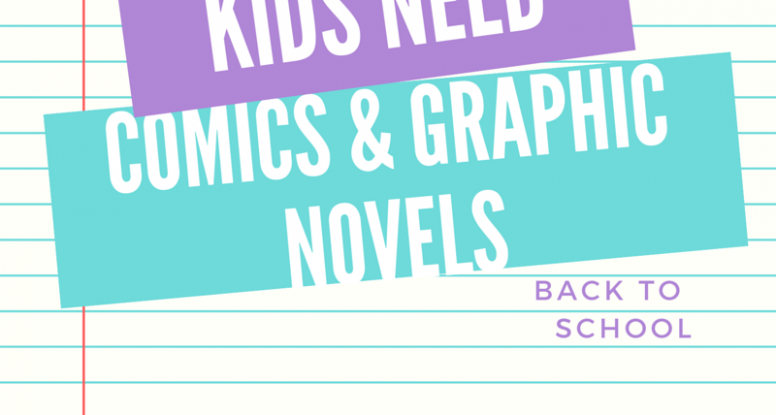
9 Reasons Why Kids Need Comics and Graphic Novels
Everyone knows the importance of helping kids establish a love of reading early in their childhood. And though it’s no secret that kids love comics and graphic novels, what still seems to be a point of contention is whether or not kids should be encouraged to read comics and graphic novels.
The answer? Absolutely.
Comics and graphic novels are flashy, yet underrated tools in parents’ and teachers’ educational tool belts. Kids are drawn in by the images and colors and learn important nuances of reading along the way.
Here are 9 reasons why kids need comics and graphic novels:
1.Reading comics teaches students inference.
According to Imagination Soup’s “8 Reasons to Let Your Kids Read Comic Books,” with comics, readers must rely on the dialogue and the illustrations – inferring what is not written out by a narrator – a complex reading strategy.
2. Reading comics slows down skimming speed demons.
Kids who skim their books find themselves moving slower when they take on comics. Instead of rushing to finish, they take their time to fully understand the pictures and plot.
3. Reading comics and graphic novels boosts exposure to diverse characters, settings and more.
The push by readers for authors and publishers to include more diverse characters in graphic novels and comics, combined with a plethora of independent publishers who are bringing diverse characters to life means kids see a wide range of characters in visual form. Legend of the Mantamaji is just one of the diverse character created by independent publishers in recent years who are currently gaining critical acclaim among critics, librarians and readers.
4. Comics and graphic novels are perfect for reluctant readers.
Students who are struggling to read or who are tackling English as a second language (ESL) don’t just need books they can read, but also need books that give them confidence to keep trying. No one wants to have to use baby books to help boost their reading abilities. Comics help students by providing age appropriate materials with the added bonus of illustrations that aid in comprehension.
5. Comics and graphic novels tackle tough topics.
Comics and graphic novels have a rich tradition of taking on topics like racism, sexism and GLBT issues at various student age/reading levels. The addition of a visual element to these topics allows students to gain deeper insight into the material.
6. Kids who read comics and graphic novels learn to cultivate their tastes when selecting their own books.
According to ToonBooks.com’s “Are Kids Wasting Their Time NOT Reading Comics?” post, browsing comics is remarkably easy, because instead of merely sifting through the opening pages of a novel or relying on blurbs, flipping through a comic reveals its art style, its major characters, and a good deal about the mood of the story. The independence to choose their own adventure, so to speak, gives kids more motivation to explore their love of reading and what they believe is interesting or exciting – instead of simply having their choices limited by or dictated to them by the adults in their lives.
7. Graphic novels can be paired with classics to enhance student understanding and interest.
According to Scholastic.com’s “Raising SuperReaders: The Benefits of Comics and Graphic Novels,” one high school teacher on the “Super Girls” panel at New York Comic Con said he’s found success in pairing a canonical text like The Scarlet Letter with a graphic novel that centers on female protagonists who feel alienated.
8. Graphic novels and comics help kids with disabilities, including autism and dyslexia.
According to KidsReadComics.com, “For children with autism, the illustrations in comic books and graphic novels can help them better understand facial expressions and understand the emotions of the characters, things that might be missed when they are reading traditional text. For children with dyslexia, the pictures in graphic novels help them still follow the plot and recall details even when they are having trouble with the text, particularly as they often are better able to remember pictures than sounds or words.”
9. Graphic novels and comics aren’t just about superheroes.
Comics and graphic novels can be found in every genre including history, science, medicine, non-fiction, fiction adaptations and more. Diverse offerings mean students can pursue their interests and discover new ones outside of folks in tights. It’s not unusual for a student to move from a graphic novel on a subject to a non-fiction book on the same subject.
The back to school sales are on and it’s easy to blow past the colorful sections of comic books and graphic novels, but take a moment and help your child choose something that they’ll love to read, share at story time and with their reading buddies.
Here are a few sources to help you find comic book and graphic novel recommendations:
Middle School Monday: The Big 4 (part 1) by Julie Stivers Diverse Heroes,
New Series: Seventeen Graphic Novels for February, Black History Month
